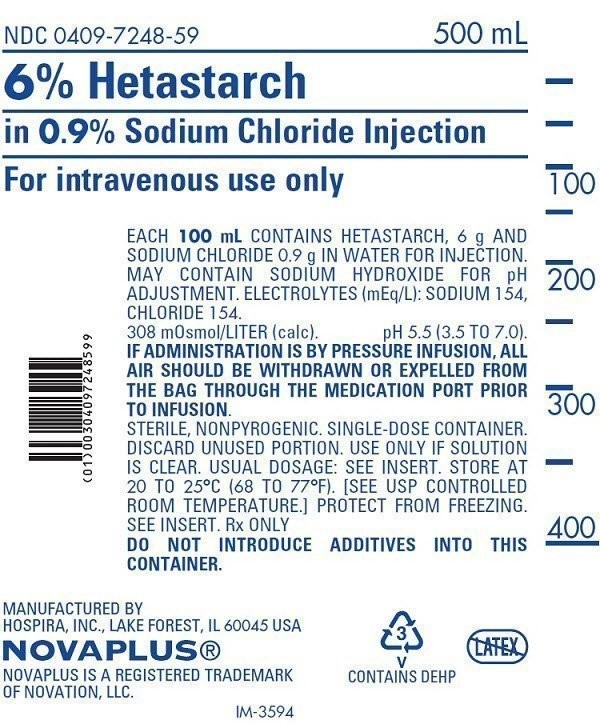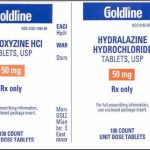
Contents
hetastarch
Hetastarch cannot be used as a substitute for blood or plasma. Hetastarch is also used in leukapheresis, a process by which white cells are collected from donors. Hetastarch facilitates the separation of granulocytes from red blood cells and improves the yield.
Hetastarch is a synthetic colloid derived from amylopectin, a starch present in many foods. Hetastarch solution increases the oncotic pressure within the blood vessels, expanding the plasma volume. In leukapheresis, hetastarch increases the sedimentation rate of red cells, facilitating the extraction of granulocytes.
Hetastarch solution is administered intravenously to patients with low plasma volume due to severe blood loss. Some formulations also contain electrolytes. The degree of plasma volume expansion depends on the patient’s intravascular status, and the volume decreases in the following 24-36 hours.
Warnings
- Do not use hetastarch when alternate treatments are available.
- Do not use hetastarch in patients with hypersensitivity.
- Do not use hetastarch in severe congestive heart failure, bleeding disorders, severe kidney failure, liver disease, low platelet count, kidney impairment, critically ill patients, surgery patients, or blunt trauma patients.
- Do not use in patients undergoing open heart surgery with cardiopulmonary bypass or immediately post-procedure.
- Monitor coagulation status of patients, particularly surgery patients.
- Discontinue hetastarch at the first sign of coagulopathy.
Side effects of hetastarch:
Common side effects of hetastarch include hypersensitivity reactions such as rash, hives, itching, erythema multiforme, coughing, sneezing, flushing, chills, fever, restlessness, swelling in the face and around eyes, swelling under the skin and in mucous tissue, swelling of the voice box, non-cardiac pulmonary edema, bronchospasm, wheezing, whistling sound while breathing, rapid breathing, shortness of breath, chest pain, abnormally rapid or slow heart rate, severely low blood pressure, rapid and irregular ventricular contraction, cardiac arrest, life-threatening allergic reaction, and death.
Call your doctor immediately if you experience any of the following symptoms or serious side effects while using this drug:
- Serious heart symptoms include fast or pounding heartbeats, fluttering in your chest, shortness of breath, and sudden dizziness;
- Severe headache, confusion, slurred speech, severe weakness, vomiting, loss of coordination, feeling unsteady;
- Severe nervous system reaction with very stiff muscles, high fever, sweating, confusion, fast or uneven heartbeats, tremors, and feeling like you might pass out; or
- Serious eye symptoms include blurred vision, tunnel vision, eye pain or swelling, or seeing halos around lights.
This is not a complete list of all side effects or adverse reactions that may occur from the use of this drug. Call your doctor for medical advice about serious side effects or adverse reactions. You may also report side effects or health problems to the FDA at 1-800-FDA-1088.
Dosages of hetastarch:
Injectable solution:
- 6% hydroxyethyl starch in 0.9% NaCl (Hespan)
- 6% hydroxyethyl starch in lactated electrolyte solution (Hextend)
Adult:
Hypovolemia:
- 500-1000 mL (30-60 g) intravenous (IV)
- Not to exceed 1500 mL/day (20 mL/kg)
- Monitor: Complete blood count (CBC) with differential, hemoglobin (Hgb), hematocrit (Hct), prothrombin time (PT), partial thromboplastin time (PTT)
Leukapheresis:
- 250-700 mL Hespan to which citrate anticoagulant has been added
- Ratio of 1:8 to 1:13 to venous whole blood
- Monitor: CBC with differential, Hgb, Hct, PT, PTT
- Creatinine clearance (CrCl) below 10 mL/min: Following a regular initial dose, reduce subsequent doses by 20-50% of normal
Pediatric:
Hypovolemia (Off-label)
- 10 mL/kg/dose
- Not to exceed 20 mL/kg
Leukapheresis (Off-label)
- 250-700 mL Hespan
- Infused at a ratio of 1:8 to 1:13 to venous whole blood.
Other Information:
- Monitor: CBC with differentials, Hgb, Hct, PT, PTT
Overdose:
- Hetastarch is typically administered under clinical conditions in the intensive care unit where the patient’s vital signs are continuously monitored and overdose is unlikely.
- Excessive administration of hetastarch can cause circulatory overload and hemodilution.
- Hetastarch interferes with the function of platelets and clotting factors and can increase the risk of bleeding.
Drug interactions:
Inform your doctor of all medications you are currently taking. Never begin taking, suddenly discontinue, or change the dosage of any medication without your doctor’s recommendation.
- Severe interactions of hetastarch include: Arbekacin
The drug interactions listed above are not all of the possible interactions or adverse effects.
It is important to always tell your doctor, pharmacist, or health care provider about all prescription and over-the-counter medications you use, as well as the dosage for each, and keep a list of the information. Check with your doctor or healthcare provider if you have any questions about the medication.
Pregnancy and breastfeeding
- There are no adequate and well-controlled studies on the safety of hetastarch use in pregnant women, however, animal reproductive studies show it can cause fetal harm. Hetastarch should be used with caution in pregnancy only if clearly needed and potential benefits to the mother outweigh potential fetal risks.
- It is not known if hetastarch is present in breastmilk. Hetastarch should be administered with caution in nursing mothers because many drugs are excreted in breastmilk.
By clicking Submit, I agree to the MedicineNet’s Terms & Conditions & Privacy Policy and understand that I may opt out of MedicineNet’s subscriptions at any time.
Summary
Hetastarch, with the chemical name of hydroxyethyl starch, is a starch derived from corn, used to increase the fluid volume of blood when other adequate treatments are not available. Do not use hetastarch in severe congestive heart failure, severe bleeding disorders, and severe kidney failure. Common side effects of hetastarch include hypersensitivity reactions, circulatory overload, congestive heart failure, pulmonary edema, intracranial bleeding, and others.


